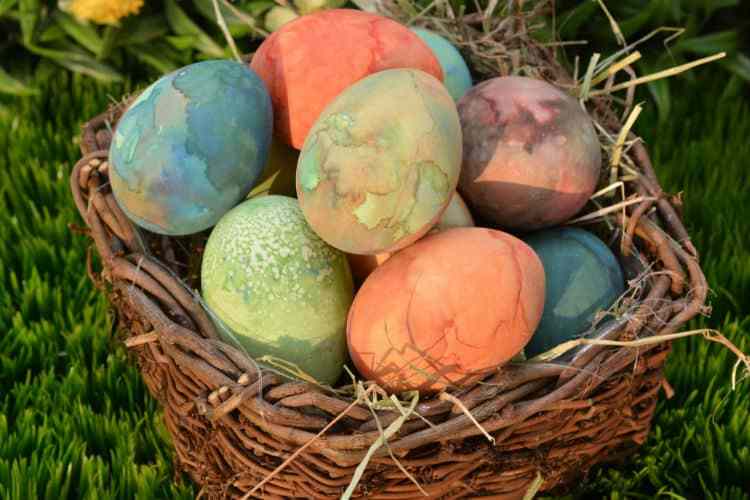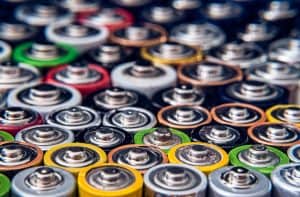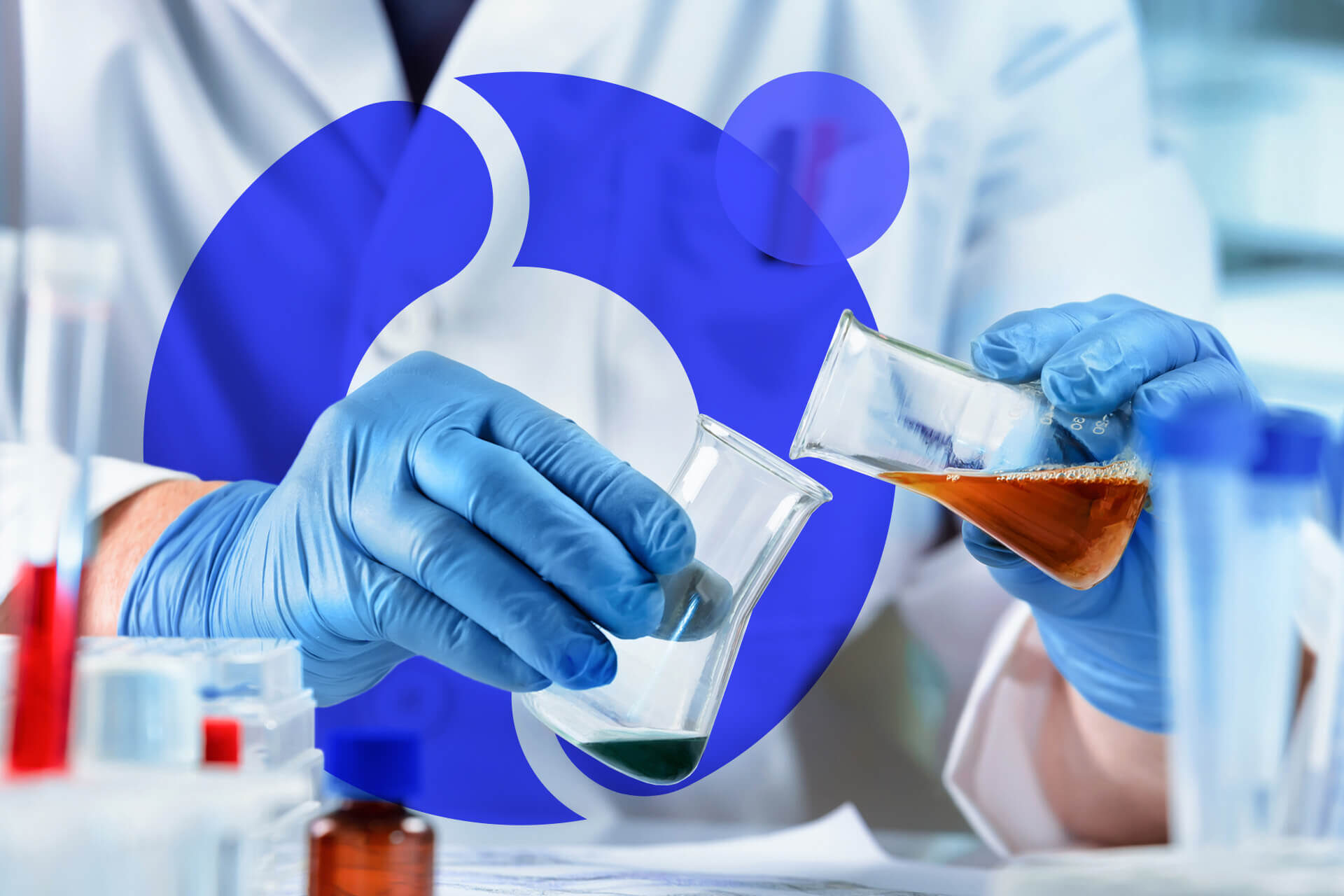
Fun Easter Egg Science Experiments for Kids
March 29, 2018 - Emily Newton
Revolutionized is reader-supported. When you buy through links on our site, we may earn an affiliate commision. Learn more here.
Easter is the perfect time to put together egg-citing hands-on experiments which test scientific principles in a meaningful way. Basic Easter supplies such as eggs and vinegar are all you need — besides paper towels and your game face — to create lasting Easter memories in the name of science. Read on for six egg science experiments your children will be so excited to try.
1. Naked Egg
Hard shells cover eggs for protection. If the egg is fertilized, the shell protects a baby chick. Point out to your children that you will be using an unfertilized egg — prepare for their groans of disappointment — for this experiment, but the principle remains the same. Eggshells have to stay strong. What are they made of?
What You Need:
- An egg
- A tall drinking glass, preferably wide on top
- White vinegar
What You Do:
- Fill the glass about two-thirds full with vinegar. Leave enough room on top for the egg to sit wholly covered inside.
- Place your egg in the glass and note the bubbles which start to form.
- Leave your egg in the vinegar undisturbed for about three days. When you take it out, gently rinse with water and observe. What do you see? How does it feel? Where is the shell?
What Happened:
The eggshell is gone, but the egg inside remains! It’s naked. Shells are made of calcium carbonate — as is sidewalk chalk — which breaks apart when mixed with acid, in this case, vinegar. The egg remains intact, however, thanks to a delicate membrane that lines the shell. Why might this membrane be important? Check out the next experiment to find out!
2. Shrinking Egg
Your naked egg has a visible yellow yolk that appears enlarged. That’s because it, too, absorbed some of the liquid from your previous experiment — which caused it to swell. Can you shrink the yolk back to normal size? Find out by conducting this egg science experiment.
What You Need:
- The naked egg
- A tall drinking glass
- Corn syrup
What You Do:
- Fill the glass about two-thirds full with corn syrup and gently place the naked egg inside. Make sure the egg is completely covered.
- Let the egg sit in the corn syrup for about three days. When you take it out, what do you see?
What Happened:
You did it! The egg shrank back down again. Membranes are permeable, which means they allow small particles — like water and air — to pass back and forth through them. Corn syrup is comprised of particles too big to permeate through your egg’s membrane, but water from inside the egg was able to pass into the corn syrup, shrinking the egg.
3. Strong Egg
Your eggshell completely dissolved when submerged in an acidic substance, and let’s face it; eggs break all the time by accident. They must not be as strong as we think. Or are they?
What You Need:
- At least four raw eggs
- A pen
- Heavy books
- Scissors, preferably with pointy tips
What You Do:
- Break eggs gently, one at a time, and rinse off your half shells, setting the eggs aside — maybe for a post-experiment fresh baked treat or healthy omelet!
- Check out your half shells. You need four that are approximately the same height. Measure and score a line around each for trimming.
- Use scissors or break bits off by hand to even up with the scored line.
- Place four shells in a rectangular shape, open end down. Start stacking heavy books on top. Keep piling books until the eggs crack.
What Happened:
The eggshells were stronger than you egg-spected! Dome shapes — like the ones your cracked eggs resembled when placed upside down — distribute weight efficiently to support more of it.
4. Unbreakable Egg
But surely eggs are not so strong that you can’t break one with your bare hand? Or are they?
What You Need:
- An egg
- Plastic wrap
What You Do:
- Wrap the raw egg in cling wrap and close your hand around it.
- Squeeze as hard as you can.
- Take the plastic wrap off and squeeze again.
What Happened:
Unbreakable egg science experiments show us the egg stayed intact even though you’re strong. If pressure is applied evenly, eggs — thanks to their shape — are surprisingly sturdy, which explains why big chickens can sit on them and they won’t crack until the baby chick is ready to be born.
5. Spider Egg
Here’s a fun way to make creepy spider eggs with all natural food dye for an eye-popping treat.
What You Need:
- Raw eggs
- A pot of water
- Food for dyeing, such as blueberries or beets
What You Do:
- Place eggs in a pan, cover completely with water. Add blueberries or chopped beets.
- Boil for 10 minutes.
- Take hardboiled eggs out and rinse. Keep colored mixture off to the side.
- Let the eggs cool, then crack them gently to create a spider web look along the shell.
- Place cracked eggs back in the colored mixture and allow to sit for about three hours.
- Rinse and peel eggs, check out the spidery web design!
What Happened:
Your food dye was potent enough to color the eggshell, but not the egg itself until the shell broke. Color permeated the shell through crack openings and dyed the egg only in those spots.
6. Floating Egg
We now know that eggs are strong and both the shell and interior membrane are permeable. But do eggs float or sink? This is one of our favorite egg science experiments to test. Here’s a fun way to find out:
What You Need:
- Two raw eggs
- Two tall drinking glasses or bowls
- Salt
- Teaspoon
- Warm water
What You Do:
- Place warm water in each glass or bowl and gently lower in an egg.
- Note if the eggs sink or float.
- Add salt, one teaspoon at a time, to one glass until you see that egg start to float!
What Happened:
Adding salt changed the composition of the water to become denser. Salt water is heavier — or denser — than an egg, so the egg floated up. Think about swimming in an ocean or a lake. Is it easier for you to float in the salt water?
Get Crafty
Congratulations! You’ve accomplished egg-cellent science work while learning about membranes, permeability, weight distribution and density. Who said Easter is all about chocolate and bunnies anyway?
Which one of these egg science experiments was your favorite? Let us know in the comments below!
Revolutionized is reader-supported. When you buy through links on our site, we may earn an affiliate commision. Learn more here.
Author
Emily Newton
Emily Newton is a technology and industrial journalist and the Editor in Chief of Revolutionized. She manages the sites publishing schedule, SEO optimization and content strategy. Emily enjoys writing and researching articles about how technology is changing every industry. When she isn't working, Emily enjoys playing video games or curling up with a good book.




